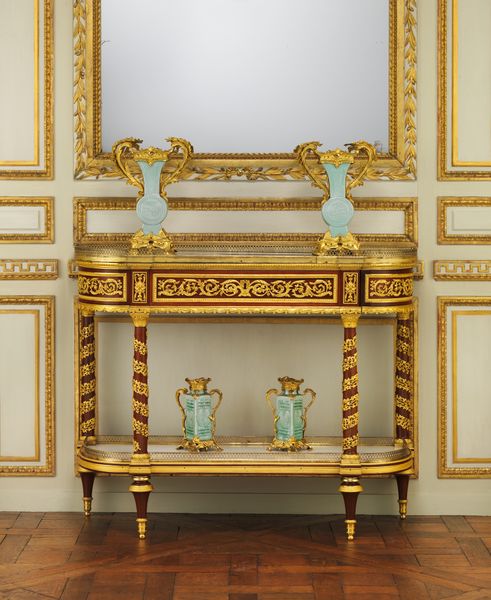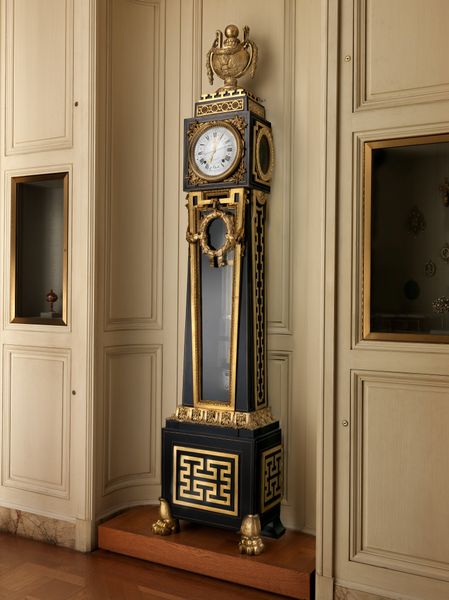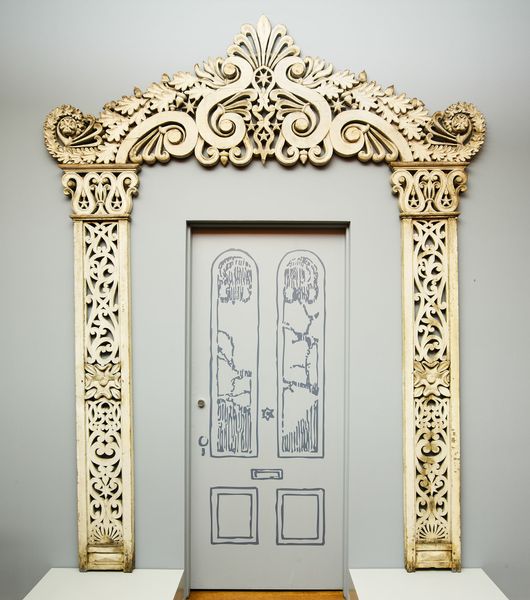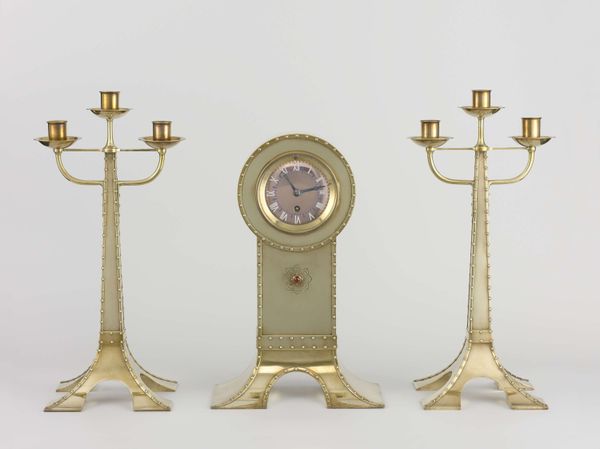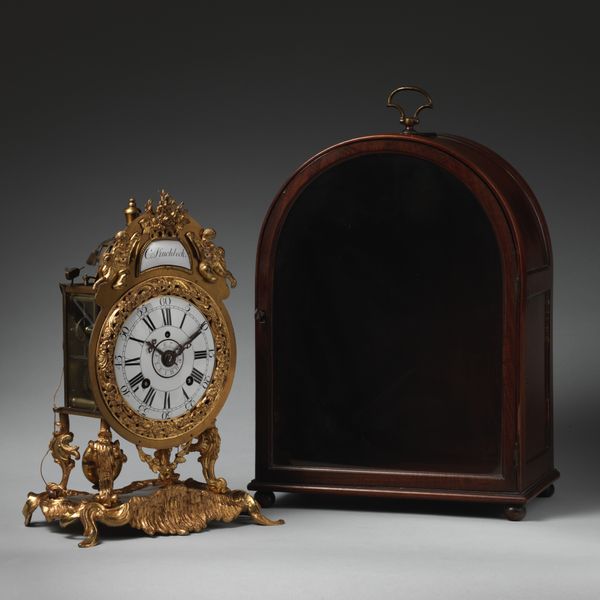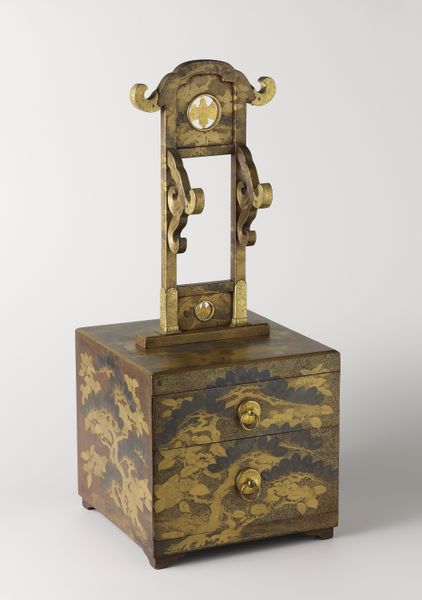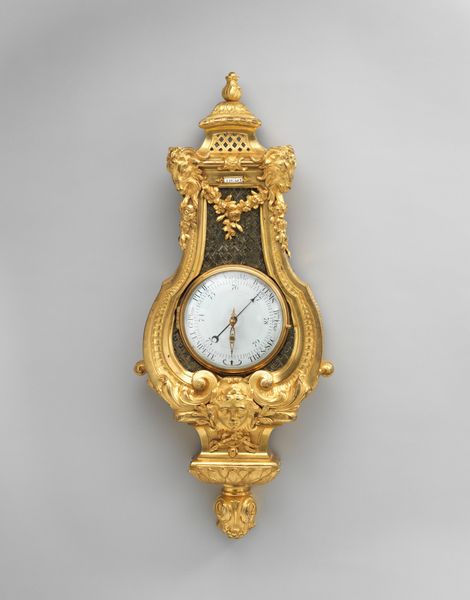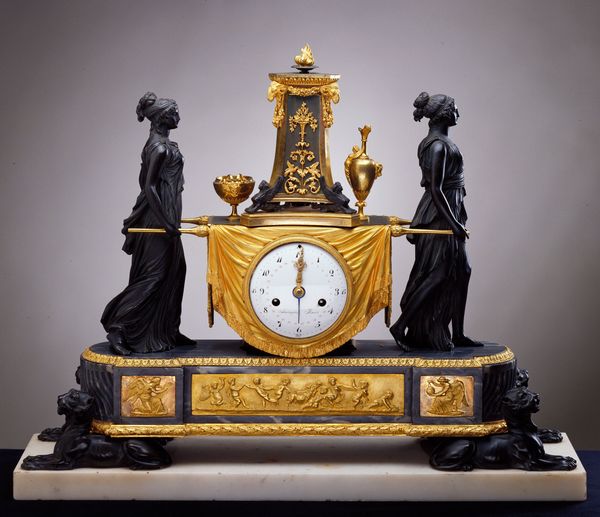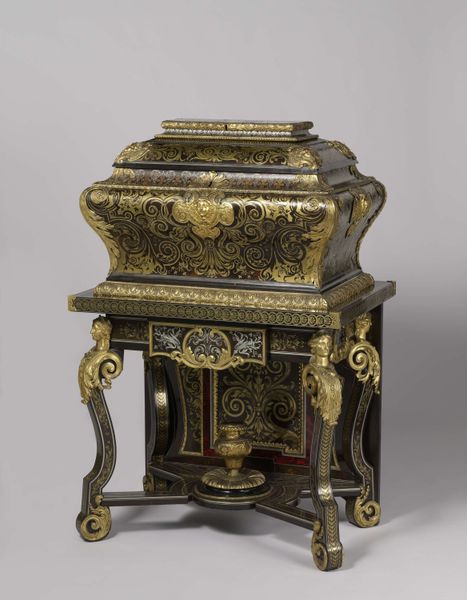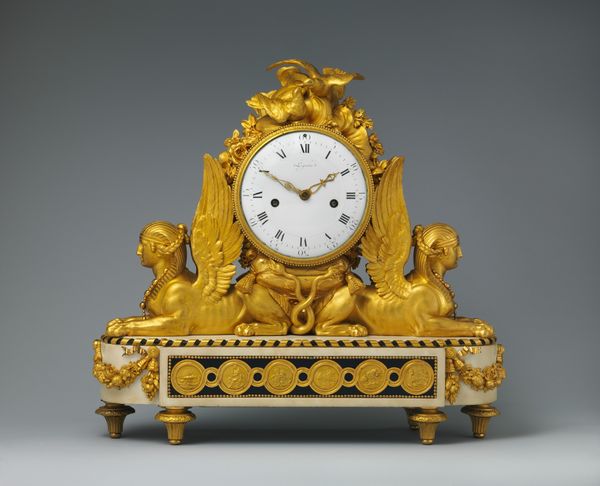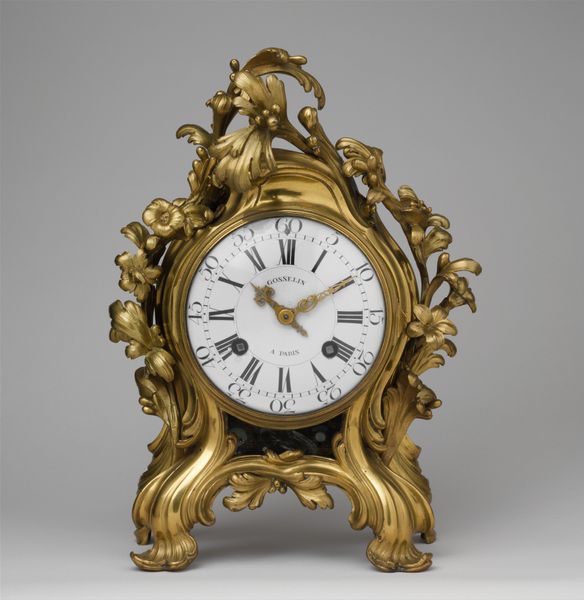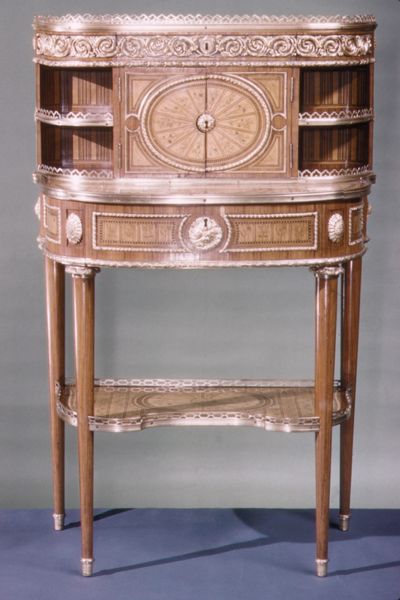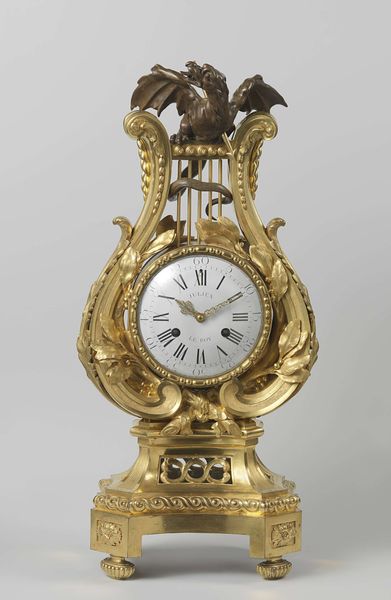
Dimensions: height 451.0 cm, width 181.5 cm, depth 72.0 cm, width 169.5 cm, depth 45.0 cm
Copyright: Rijks Museum: Open Domain
Curator: Elegance and ambition – that's what comes to mind immediately. The intricacy is astonishing. Editor: And speaking of intricacy, let's dive in. What we're admiring here is a pier table and mirror, believed to have been crafted around 1775 by John Linnell. The construction boasts carved wood and gilding, characteristic of its time. Curator: Gilded, of course, speaks to more than just aesthetics. The deliberate use of gold invokes the sun, kingship, divinity – it pulls upon associations reaching far beyond mere opulence. Reflecting one’s self in such light is powerful. Editor: Absolutely, the gilding connects it to the aspirational culture of the late 18th century. These furnishings were status symbols, weren’t they? Pieces designed to broadcast taste, wealth, and a connection to aristocratic ideals in both public and private spaces. Curator: More than just status; it’s about conjuring specific narratives. Look at the Rococo style – the scrolling foliage, the asymmetrical arrangements. It’s meant to evoke a sense of pastoral fantasy and carefree indulgence, offering a symbolic escape from the realities of everyday life. Editor: An escape certainly enabled by the wealth that produced and consumed these pieces. The table itself acts as a stage. The objects placed upon it, doubled in the mirror's reflection, participate in a display that reinforces power dynamics. Think of who wouldn’t have access to this image of luxury and leisure. Curator: True, the mirror’s reflective property serves a deeper symbolic purpose: The act of self-reflection in such an ornate frame inherently elevated the observer. In that respect, mirrors aren't simply functional; they’re powerful cultural tools that shape perceptions of identity. Editor: Mirrors serving cultural power. I find myself pondering the future lives of this table and mirror in museums such as this one. What is the cultural significance to audiences that may know nothing about this objects original contexts? Curator: Excellent food for thought. It reminds me of our continuous work in decoding the subtle messages and cultural weight of art, era by era, age by age. Editor: And, hopefully, provoking our listeners to do the same, long after this audio guide ends.
Comments
rijksmuseum about 2 years ago
⋮
This pier table and mirror were made for Shardeloes House in Buckinghamshire, the home of the wealthy landowner William Drake. Beginning in 1758, Drake had his country house remodelled in the Neoclassical style after a design by the eminent Scottish architect Robert Adam. The renovation took some time; only around 1775 were two of these pier tables and mirrors for the large sitting room delivered by the London firm of cabinetmakers Linnell.
Join the conversation
Join millions of artists and users on Artera today and experience the ultimate creative platform.
